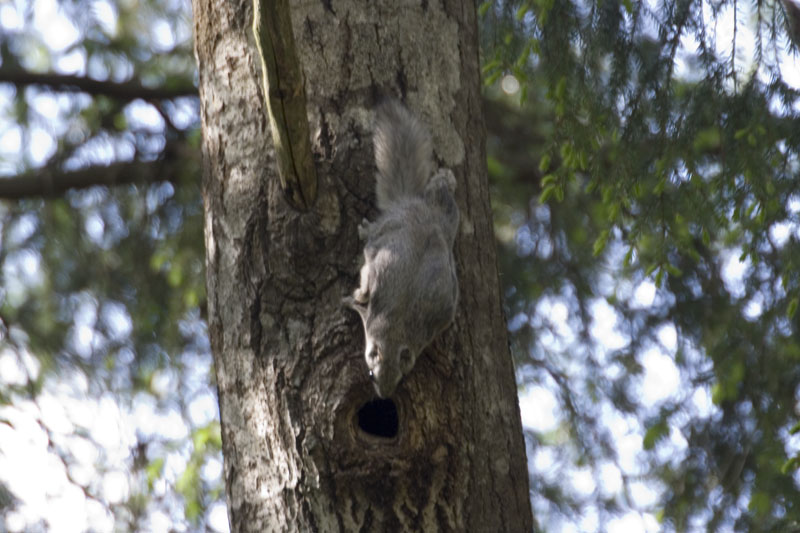- Siberian Flying Squirrel
Taxobox
name = Siberian Flying Squirrel
status = LR/nt | status_system = IUCN2.3
trend = unknown

image_width = 200px
image_caption = Flying squirrel next to nesthole
regnum =Animal ia
phylum = Chordata
classis =Mammal ia
ordo =Rodent ia
familia =Sciuridae
genus = "Pteromys "
species = "P. volans"
binomial = "Pteromys volans"
binomial_authority = (Linnaeus, 1758)The Siberian Flying Squirrel ("Pteromys volans") is an
Old World flying squirrel with a range from westernFinland and theBaltic states to the Pacific coast. It is the only species of flying squirrel found inEurope , and is considered vulnerable within theEuropean Union .A female Siberian Flying Squirrel weighs about 150
gram s, the males being slightly smaller on average. The body is 13–20 cm long, with a 9–14 cm long flattened tail. The eyes are large and strikingly black. The coat is gray all over, the abdomen being slightly lighter than the back, with a black stripe between the neck and the forelimb. A distinctive feature of flying squirrels is the furry glide membrane orpatagium , a flap of skin that stretches between the front and rear legs. By spreading this membrane the flying squirrel may glide from tree to tree across distances of over a hundred meters.The diet of a Siberian Flying Squirrel consists of
leaves ,seed s, cones,bud s, sprouts, nuts,berries and occasionally bird eggs and nestlings. Whenalder andbirch catkin s are plentiful, the squirrel may store them for the winter in oldwoodpecker holes or similar nooks.The squirrels are preyed upon by
martens ,owl s, and cats.Siberian Flying Squirrels mate early in the spring. In southern
Finland the first mating season begins in late March, with a second mating season occurring in April. After a gestation period of five weeks, the female gives birth to a litter of usually two or three young, each weighing about 5 grams. Siberian Flying Squirrels preferentially build their nest in holes made by woodpeckers, but they may also nest inbirdhouse s if the size of the entrance is appropriate. The nest consists of a pile of soft materials (preferably softbeard lichen ) into which the squirrel burrows. A Siberian Flying Squirrel can live up to about five years.Siberian Flying Squirrels favor old forests with a mix of
conifer s anddeciduous tree s. They are mostlynocturnal , being most active late in the evening, although females with young may also feed during the day. Siberian Flying Squirrels do not hibernate, but in the winter they may sometimes sleep continuously for several days. As shy and nocturnal animals, Siberian Flying Squirrels are seldom seen. The most common sign of their presence are their droppings, which resemble orange-yellow rice grains and are often found beneath or on top of their nest.References
*
External links
* [http://www.ponttokamera.net/index_e.htm Bird Box Cam] , includes pictures of Siberian Flying Squirrels nesting in a birdhouse in
Helsinki .
* [http://animaldiversity.ummz.umich.edu/site/accounts/information/Pteromys_volans.html Pteromys volans] at Animal Diversity Web.
* [http://sydaby.eget.net/swe/flygekorre.htm Images] and text in Swedish about Pteromys volans.
Wikimedia Foundation. 2010.
